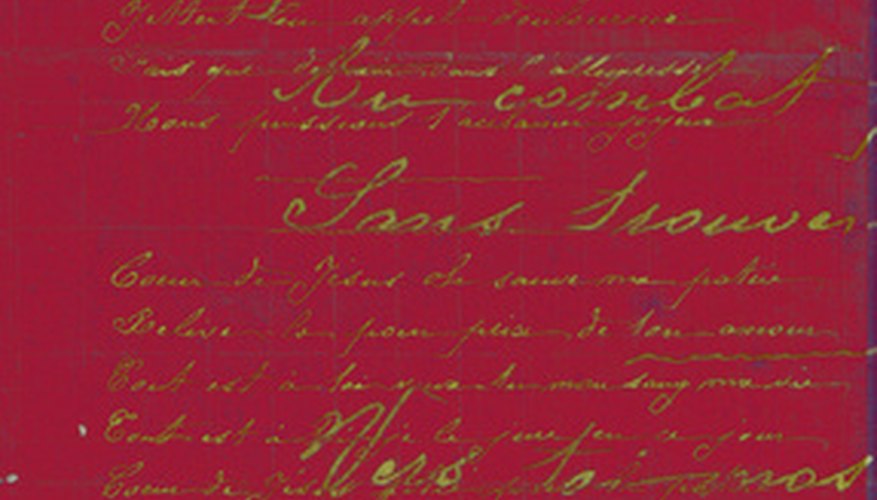Humans have used tools for writing since ancient Egyptian and Roman times. Most were fashioned from whatever material was available, such as reeds and feathers. Quill pens, made of sharpened goose feathers, were used in Europe by the 13th century. During the Victorian period, from 1837 to 1901, metal nibs and fountain pens became popular and the first kind of typewriter was in use.
Steel Nibs

Although metal pens were made from the late 16th century, they were mostly ornamental and rare. According to the Reader's Digest "Origins of Everyday Things," in 1803, Bryan Donkin developed a steel nib which was not very successful, as the ink corroded the steel and it was less flexible than a quill. The English inventor Joseph Gillot eventually introduced three slits into the nib to make it more flexible, and steel nibs were commercially available by the 1830s.
Propelling Pencil
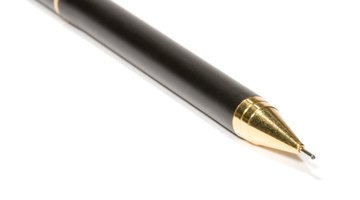
Although graphite pencils date from the 16th century, the propelling pencil first appeared in 1822 and was patented by Sampson Mordan of England, according to Leadholder Drafting Pencil Museum. The American Hyman Lipman devised the idea of producing a pencil with a glued-in rubber eraser in the1850s, and he sold the patent for thousands of dollars four years later.
Fountain Pens
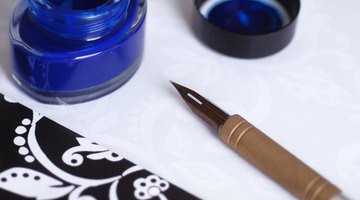
Quills and steel nib pens were slow to write with, as they had to be dipped in ink every few seconds. In 1832, John Joseph Parker developed a way of producing a pen with its own reservoir of ink. Fountain pens did not catch on until 1884, says "Origins of Everyday Things," when the American inventor Lewis Waterman developed the first practical version using non-corrosive ink.
Ink, Blotter and Wax
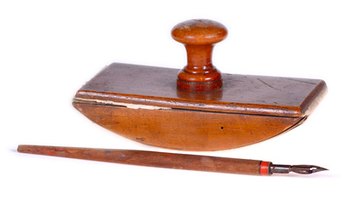
A bottle contained the ink used for quills and steel nib pens until portable inkwells appeared in the 19th century. The writer then pressed a blotter over the wet ink to prevent smudges on the paper. Rolling blotters were popular during the Victorian period. Letters were then folded up and sealed with wax.
- A bottle contained the ink used for quills and steel nib pens until portable inkwells appeared in the 19th century.
Victorian Children
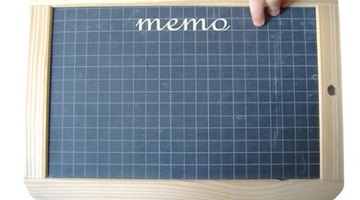
Children at Victorian schools used a slate pencil, or sometimes a piece of chalk, to write on a slate. When they finished, they wiped the slate clean with a rag cloth. Older children copied letters onto paper with a nib pen which they dipped in ink. The ink was kept in a large bottle and dispensed into individual inkwells on the desks.
- Children at Victorian schools used a slate pencil, or sometimes a piece of chalk, to write on a slate.
- Older children copied letters onto paper with a nib pen which they dipped in ink.
Typewriter

DK Eyewitness Guide to Writing names American William Austin Burt as inventor of the first typewriter in 1829, which was made of wood. By 1866, Christopher Latham Sholes and Carlos Glidden produced a workable typewriter using the QWERTY keyboard. Seven years later, Sholes signed a contract with E. Remington and Sons, who made the first mass-produced typewriters in 1873, which they renamed the Remington 1.
